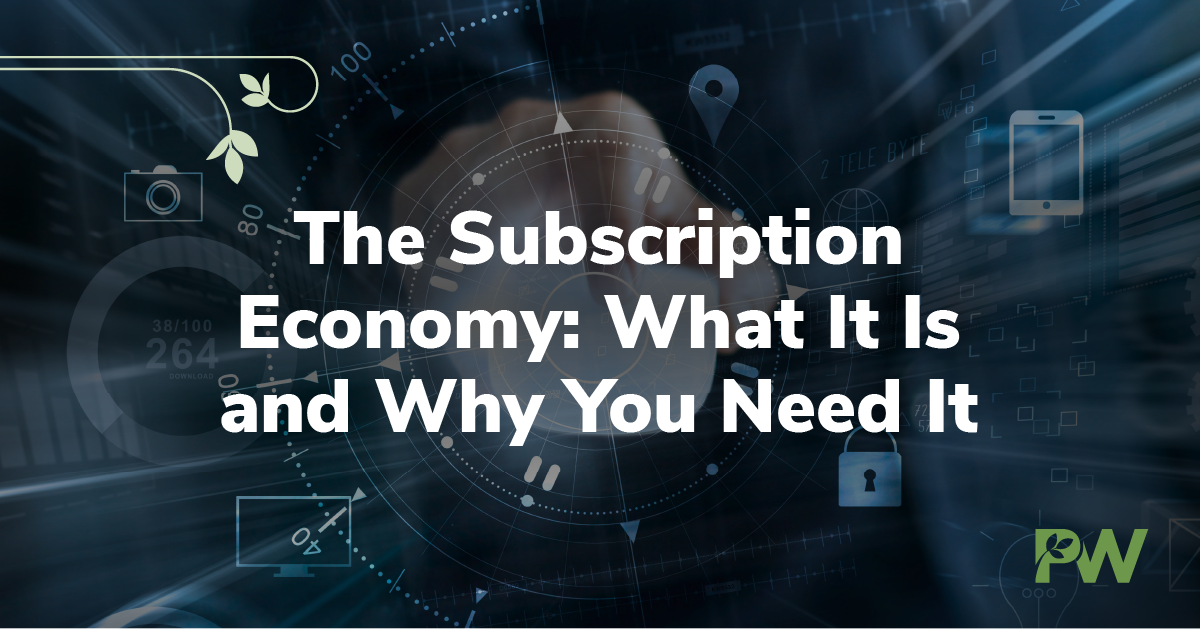Companies are constantly looking for innovative ways to grow their revenue while providing a positive experience for their customers. One area that has experienced tremendous growth—with no sign of slowing—in recent years is subscription-based services.
Subscription Billing Explained
With subscription billing, customers pay for access to a product rather than the product itself. Customers are charged a fixed amount of money at regular intervals, such as weekly, monthly, or annually.
This is not a new sales model. Tech companies in particular have relied on subscription models for decades, and most SaaS companies today use subscription billing exclusively. SaaS businesses are growing 200 percent faster than perpetually licensed software.
Today, more than 70% of business leaders across all industries claim subscription business models are crucial to their prospects in the future.
Why Subscription Billing?
One of the biggest reasons for subscription billing is rapid revenue growth—companies with subscription billing grew nearly six times faster than firms of the S&P 500 Index. Additionally, in 2020, many companies quickly moved to subscription-based services to help offset revenues lost by lockdowns and economic uncertainty during the Covid 19 pandemic. During that time, revenues of subscription businesses grew by 11.6%, while those of the companies in the S&P 500 Index declined by 1.6%
Other compelling statistics for incorporating subscription billing include:
-
- 75% of B2B businesses have reported subscription-based offerings have increased customer lifetime value. (Salesforce, 2021)
- Companies that implement subscription models see a 30% to 40% premium in customer LTV over selling the same products on a non-subscription business basis. (McKinsey and Company)
- The global subscription e-commerce market was valued at $13.2 billion in 2018 and is projected to reach $478.2 billion by 2025, growing at a CAGR of 68.0% during the forecast period. (Allied Market Research, 2019)
Subscriptions also provide a more predictable revenue, allowing companies to better predict revenue and cash flow distribution.
It’s not just companies that benefit from subscription billing either. Customers appreciate the lower cost and flexibility it provides, rather than a larger upfront cost and long-term commitment. Acceptance of a younger buying audience will be important for companies to consider as well; millennials and Gen-Z show a preference towards subscriptions.
Moving Into Subscription Billing
Subscription billing isn’t just for software. Companies across all industries, from automotive to healthcare to industrial, are moving to subscription billing models and seeing the increased revenue and lowered churn as a result.
Moving your company to subscription billing changes the entire cash-to-quote process, as customers move from a single sale to an ongoing lifecycle.
Factors to consider when implementing subscription billing include:
-
- What subscription model(s) is best suited to your company’s products or services?
- How will you price your subscription-based model?
- How will products be delivered after purchase?
- What technology is required to bring your transformation to life?
Adopting a successful subscription billing model requires a robust strategy based on a deep understanding of your products, your customers and their lifecycle, and your business capabilities.
Ready to find out how to speed up revenue with subscription billing models? Check out our guide to learn more.
